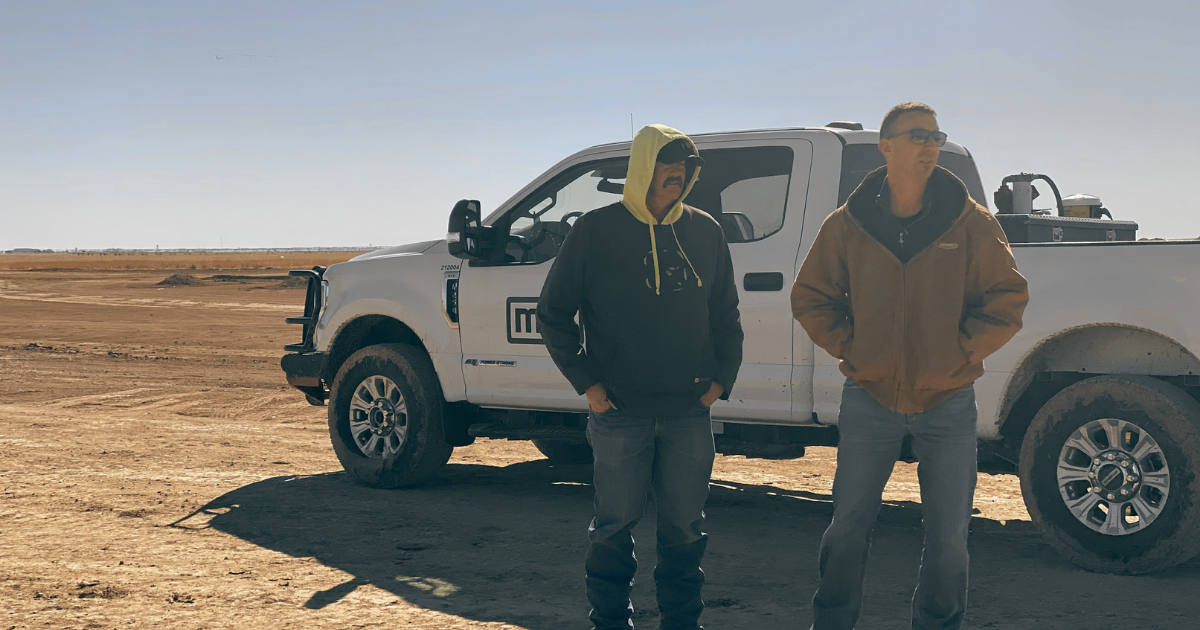
3.17.22
Types of Dairy Farms – Advantages & Considerations
Across the globe, there are many different types of dairy farms. As a result, dairy farmers have countless options for various operation components. Each choice comes with key benefits and potential drawbacks.
As we explore options for ventilation systems, waste management decisions, and milking parlors with our industry partners, MJE provides a unique perspective based on many years in the dairy construction business.
Read on to learn the advantages, considerations, and potential challenges of different types of dairies.
Ventilation Systems for Different Types of Dairies
While the options for different ventilation systems are continually growing, MJE suggests three main types of ventilation systems for dairy barns.
Cross Vent Barns – Cross vent barns have fans on one side that pull air across the width of the barn. Cross vent barns offer total control in the design phase, as these barns can be oriented however the operator desires. As a result, installation can be reasonably cost-effective, and cattle comfort is improved. Fan ventilation systems circulate the air, which helps with flies, odor control, and improves cattle comfort. While they improve cattle comfort through the summer, it can be slightly less effective for winter months, but overall, cattle comfort improves year-round.
Tunnel Vent Barns – Tunnel vent barns are similar to cross vent barns as they do have large fans on one end, but in this instance, fans are installed typically on the northeast side and pull air lengthwise through the barn.
Tunnel vent barns offer climate control and air circulation for cattle comfort. As with other fan-style barns, tunnel vent barns can help alleviate fly problems. One drawback is that power outages must be addressed immediately so that air quality is maintained for the health of the cattle. As with all barns, cattle traffic and flow are planned carefully.
Free-Stall Barns – Free-stall barns rely on natural ventilation and are typically much narrower than cross vent or tunnel vent barns. Key benefits to free-stall barns include lower upfront construction costs and ongoing maintenance costs associated with fans. Obvious challenges to free-stall barns are keeping cattle temperatures at a comfortable level and controlling odors. Free stall barns reduce the amount of time standing for cattle and minimize potential injuries for cattle.
Manure Management Options for Different Dairy Types
Effective manure and waste management are critical components of cattle health and comfort. However, every decision about manure management has different pros and cons. In addition, each dairyman or dairywoman has different needs and priorities for manure management.
Flush Barns -Flush barns use water to clear out manure when cattle are out. Flush-style barns are typically cleaner and easier to maintain, as no labor is needed to automate the system. They also reduce odors and have overall lower operating costs. A few considerations include that you’ll need nearby lagoons and will also have to have a steady water source to use in the flushing process. However, this is a practical, simple system for maintaining clean pens for healthy cows.
Vacuum Barns – Vacuum barns use large sweepers to suck up manure and bedding debris. They are an excellent way to effectively control bacteria and odor without water. They can also be a more cost-effective option for some dairy farmers. Sometimes called Honey Vacs, these trucks can easily move waste to more desirable areas for storage or land application as fertilizer.
Challenges for vacuum barns include additional labor needed to run the equipment and maintenance costs associated with large trucks. Vacuums don’t run as efficiently with sand land bedding either. However, waste transportation is controlled, and manure can be used for the operation of the dairy.
Anaerobic Digestors for Waste – Anaerobic digesters are enclosed areas where manure is taken and mixed with other organic material to produce and contain biogas. This gas is captured and can be used directly to heat water or can be combusted in an engine generator to produce electricity. Typically digestors are used in facilities that employ vacuum trucks as their preferred method of manure management.
Milking Parlors for Different Dairy Types
There are more than two options for milking parlors in modern dairies, but Rotary and Parallel parlors are the most common.
Rotary Parlors – Rotary parlors are an extremely efficient way to milk many cows at once. Cattle load themselves onto a spinning carousel where their udders can be quickly cleaned and attached to an automated milker. Automation makes this type of dairy cost-effective from a labor standpoint, as fewer people are needed to assist with the milking process. However, upfront costs can pose a challenge. Modern rotaries have sensors capable of detecting when a cow is done milking, making the milking process comfortable and easy for the cattle. Many moving parts may mean higher maintenance costs for the equipment, but rotary parlors are an excellent choice for any dairy.
Parallel Parlors – Parallel parlors are a safe and effective way to milk cattle in two rows. Parallel parlors can be structured in different ways and are considered safe to milk for both cows and handlers alike. Access to the udders can be slightly hindered from a milking standpoint, but milk collection is still centralized similarly to rotary parlors.
CONCLUSION
Each dairy facility is different, and there are various options for every budget and preference. MJE has experience with many kinds of dairies. MJE builds the world’s largest dairies with dairy farmers throughout the Midwest, and we are ready to develop or expand your dairy.
Start designing the dairy type of your dreams by contacting MJE to discuss your ideal dairy type.